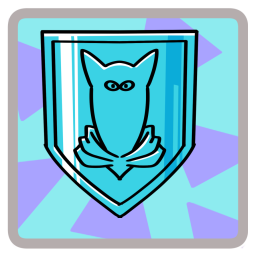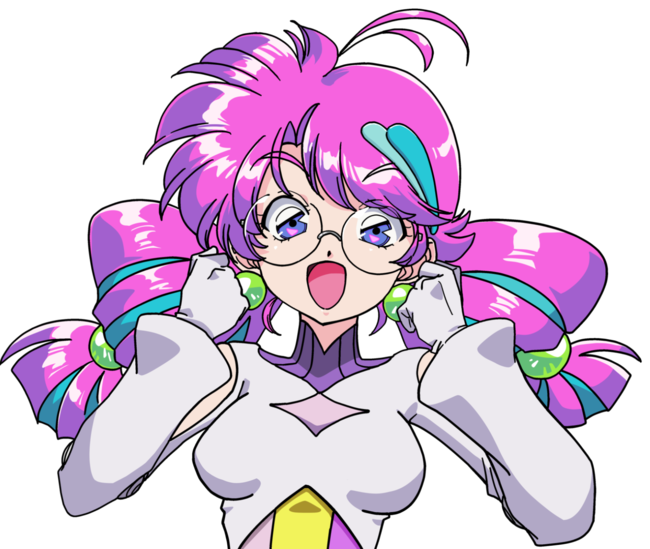In this episode, we sat down with Visual Artist Yoko Tanaka!

Affiliation and Current Work
— First, could you tell us your department and what you do for work?
I currently work in Studio 1, Production 8. I’m in charge of everything related to 2D art in Survival Quiz CITY (SQC).
In addition to character designs and main illustrations, I draw the icons used in the in-game shop and the stickers that appear in the tutorial. Now that I think of it, I also drew the illustrations that appear in the “looking for a match” screen, as well as SQC’s twitter icon. I’m lucky enough to work on quite a variety of art.
— Survival Quiz CITY has an adorable, pop look. How did it end up in this style?
We ended up going with a style that I like, hah.
Everything started when the game’s producer, Shigeta, and the art director, Ando, explained to me the concept they had for the game, and I ended up in charge of character designs.
One of the concepts behind the game is splitting players into winning and losing groups that fight to overthrow each other. The game would look provocative and gruesome if we used human characters, and I thought that a pop look would fit it perfectly. Working off that idea, I suggested using sticker-like designs, which is a style I personally like. The idea went over well with the other team members, and we ended up with the current art style.

— The illustrations look very 90s!
The game features a character called Lammy-chan, and her inspiration is taken directly from the 90s! Ando, who I mentioned earlier, said he wanted to add a character that epitomizes my style. I tried designing a character in a style that I like, but felt unsure up until the very end whether it actually belongs in the game.

— Was this retro and pop style your forte to begin with?
I do think my art style is a good fit for SQC’s world. That being said, part of my job is to draw characters for existing titles, and in those cases I follow each title’s style. And I enjoy doing that type of work. You could say I like anything related to drawing.
This may be off-topic, but the style I used for GYAAR-kun, the game’s playable character, was inspired by Shigeta, the game’s producer. While I designed GYAAR-kun I thought about how a GYAAR-kun t-shirt would look good on Shigeta, hah.
Memorable Stories
— Do you have any anecdotes from your job about experiences that left an impression on you, like things you struggled with or worked hard on?
I learned a lot from the work I did summarizing the game’s content in the form of a game advertisement, which we used to share information about the game within the production team. I designed it to look like a game package; the front side has the game’s title and an illustration, and the back has information about the game.

I had a lot of trouble deciding what pieces out of everything are the most important. I personally felt that I learned a lot from combing through and boiling down the game’s systems and conceptual information. I also learned by arranging illustrations, or by looking through key concepts like “no holds barred survival game played with a large group,” “action game,” or “winners and losers,” and deciding which to keep and which to pitch.
The point of this work is to prioritize specific elements and explain the game, but I felt that doing it also helped me organize my thoughts. This experience helps me when I make concept art for other titles, or when I held a concept art seminar for new recruits.
— It’s not often that you see concept art that relies this heavily on text. What sort of things do you pay attention to when making concept art?
I think that everyone interprets concept art differently, but personally I think it’s important that it tells you what kind of game you’re looking at with a single glance.
I think you can roughly tell the content of the games on a store’s shelves just by looking at their packaging— whether you’re looking at a kid’s game where the players compete against each other, or one where you get your friends together and set off on an adventure. I think you gather information unconsciously from differences between the characters’ appearances and their color palettes.
When I draw concept art, I consider the game’s target audience, because I think there’s a lot of information that can be gained from visuals. I then think what type of visuals would make a fan of a certain game genre want to pick up the title. I gave the art in SQC a chaotic feel to make it look like a game that you could play in a group and have fun with, since my intention was to appeal to a casual audience.
As an example, audiences that don’t play games much might see packaging with realistic characters and low saturation and think that the game isn’t for them. I think concept art is important in that it affects how players feel about a title.
— Is there anything else you pay attention to when making illustrations?
This applies to 90s-inspired illustrations like Lammy-chan, but if you don’t consciously think about the way you present each piece, then people who actually lived through that period may think that the art is outdated or doesn’t feel right.
I also keep an eye on new techniques and trends to help judge what is considered new and old.
Lammy-chan’s design may look nostalgic at first, but by comparing it with illustrations from the 90s you can tell that I implemented new illustration techniques, like color choices and forms. I hope that this results in an illustration where you can feel novel elements inside the piece’s nostalgia.
— Do you have any personal rules that you stand by when working?
There’s a part of me that wants to take time to work on something until it lives up to my expectations, but meeting deadlines is also important, so it’s a balance between the two. I think that the deadline should receive highest priority, but also that maintaining product quality levels within that constraint is also important. If our work makes its way into the world, it’ll be judged as a part of a Bandai Namco Studios title and will affect our company’s reputation. With that in mind, it’s always best to proceed through work on titles while assuring a certain quality level while meeting deadlines.
I think it’s safest to make something that meets the bare minimum requirements to be presentable at a point where you still have time, and to brush it up from there. If you wait until before the deadline then you’ll rush, and it’s not good for you emotionally. So I try to think of ways to make progress without rushing as a way to avoid pushing myself too hard.
Strengths and Beliefs
— If you had to name a single thing you’re confident in, what would it be?
When working with a blank slate, I like to suggest my own ideas about things to try with illustrations. I take pride in being more-or-less versatile.
I’m interested in recent trends or what appeals to certain audiences, and actually enjoy thinking about or giving suggestions if they’re related to these topics.
— Where do you get the latest information about art?
I try to watch a bit of everything, and make sure to watch movies and anime that are popular on streaming sites and check Pinterest. By accessing information on those sites and keeping an eye on the way past drawing styles come and go, I get the feeling that trends in illustration cycle in and out, like the fashion industry.
Recently, video streaming services let you watch old titles at the same time as new ones, and I feel that this brings even more meanings to the idea of bringing new life to a specific style.
— Do you have a guiding principal?
“Fortune is unpredictable and changeable.”
I actually never had anything like a guiding principal until now, so I used this opportunity and did a ton of research to find one, hah.
It’s tragic when a project I’m in charge of gets cancelled, but I often look back on those kinds of experiences after I cool down and realize that I learned a lot from them. You never know what’s going to happen, which is why I decided not to rejoice or resign too easily. Conversely, there have been times when I felt pleased because something I did went well, but afterwards one thing led to another and my rejoicing was for nothing. I realized you can’t tell what will bring you happiness, and what bring you misfortune.
I want to use my experiences to bring a medium-long term perspective, not just a short-term perspective, to my work!!
— Thank you!





